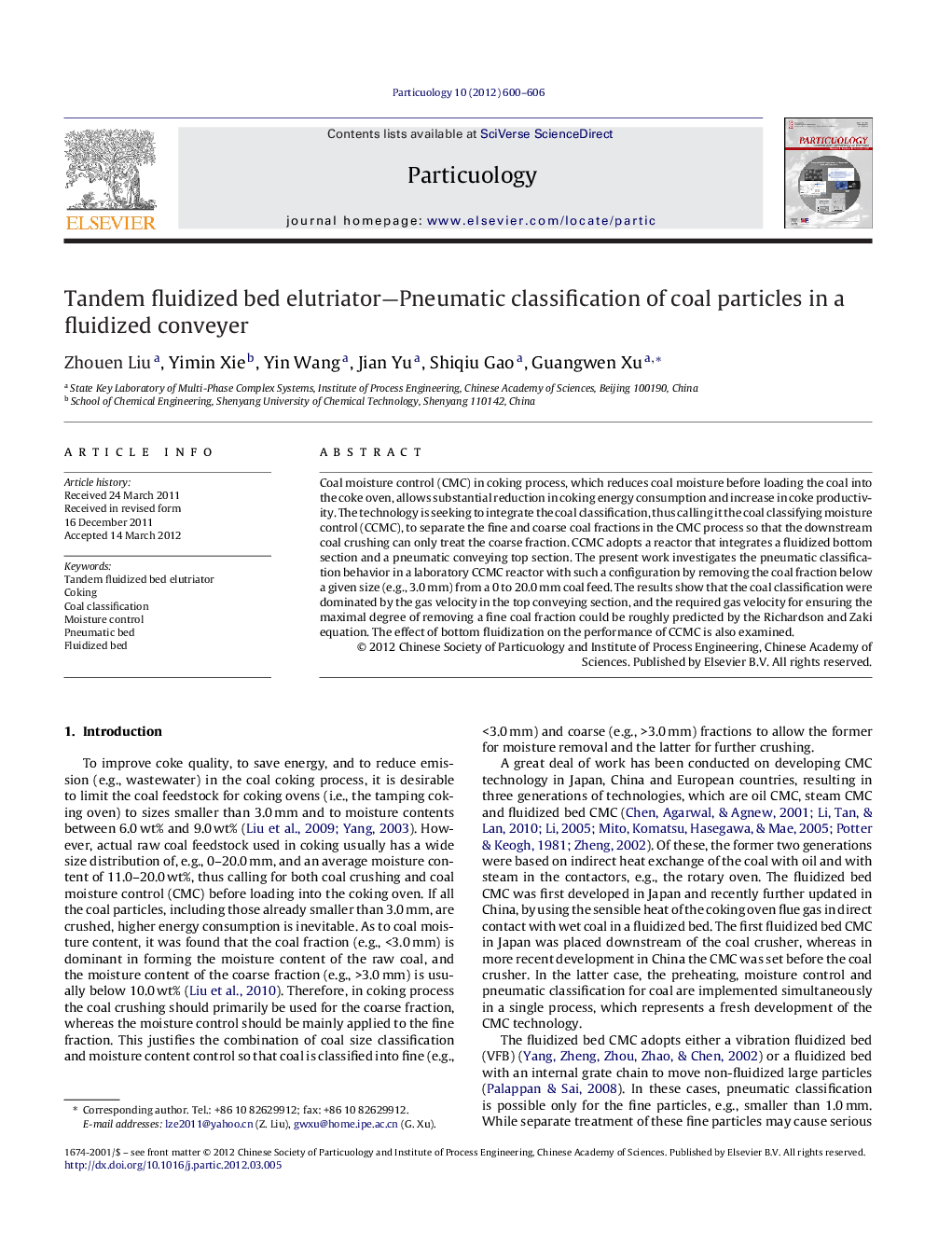| Article ID | Journal | Published Year | Pages | File Type |
|---|---|---|---|---|
| 672217 | Particuology | 2012 | 7 Pages |
Coal moisture control (CMC) in coking process, which reduces coal moisture before loading the coal into the coke oven, allows substantial reduction in coking energy consumption and increase in coke productivity. The technology is seeking to integrate the coal classification, thus calling it the coal classifying moisture control (CCMC), to separate the fine and coarse coal fractions in the CMC process so that the downstream coal crushing can only treat the coarse fraction. CCMC adopts a reactor that integrates a fluidized bottom section and a pneumatic conveying top section. The present work investigates the pneumatic classification behavior in a laboratory CCMC reactor with such a configuration by removing the coal fraction below a given size (e.g., 3.0 mm) from a 0 to 20.0 mm coal feed. The results show that the coal classification were dominated by the gas velocity in the top conveying section, and the required gas velocity for ensuring the maximal degree of removing a fine coal fraction could be roughly predicted by the Richardson and Zaki equation. The effect of bottom fluidization on the performance of CCMC is also examined.
Graphical abstractClassification performance as a function of gas velocity.Figure optionsDownload full-size imageDownload as PowerPoint slideHighlights► The tandem fluidized bed elutriator integrates a fluidized bottom section with a pneumatic conveying top section for separating fine coal smaller than 3.0 mm from larger particles. ► Classification performance is subject primarily to the gas velocity in the pneumatic conveying section. ► Adopting small-diameter bottom, lowest possible particle bed height and secondary gas stream help improve classification performance.
